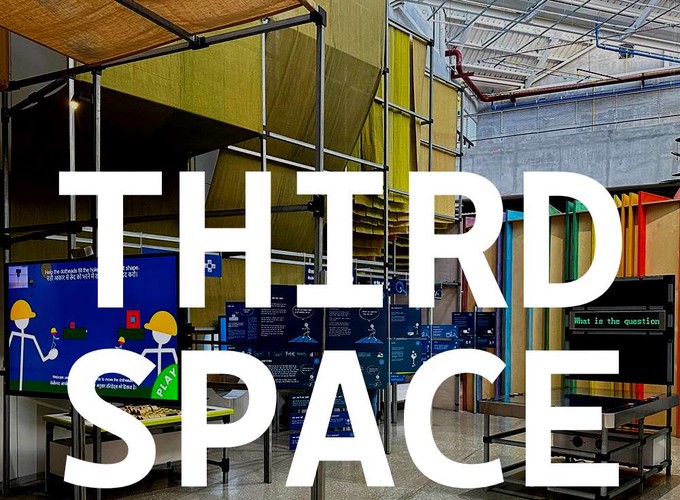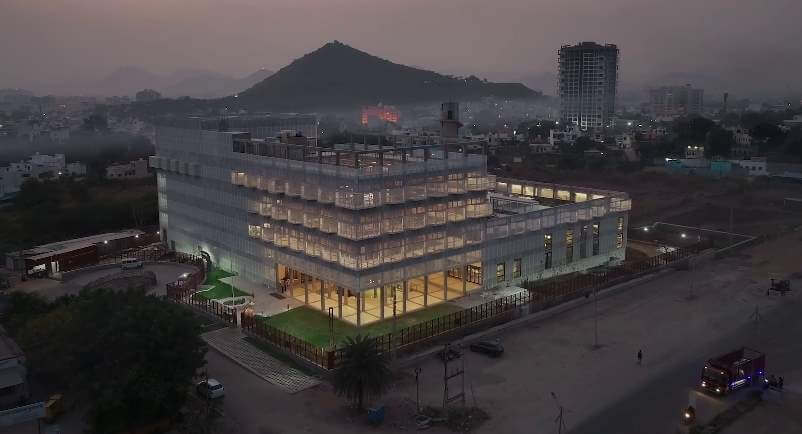
Third Space, is a brand new and a one-of-a-kind innovative community hub based in Udaipur, Rajasthan, India. It is inspired by the vision of fostering a generation of life-long learners. Third Space is a place full of resources and opportunities to engage in many different kinds of activities, it invites people to play with ideas, make cool things, and meet interesting people.
It was incredibly exciting to be involved in such an innovative and grand vision. And I was very fortunate to play a small part working on Game Design and Software Development for a number of exhibits in the Frontiers gallery at Third Space, Udaipur.
This post talks a bit about Third Space and then does a deeper dive into one of the exhibits I developed the Game Design and Software Development for.

I played a key role as a game designer for various interactives. While some were handed over to the talented technical team in Udaipur for further development, others became my ongoing projects as both a Game Designer and Software Developer.
Meeting The Dharohar Team
Dharohar, the Hindi/sanskrit word for Heritage / Legacy, is the philanthropic institute of of Singhal Family, who own Secure Meters.
I was fortunate to meet Shivani and Nandita, of Dharohar, at various conferences over the years, such as the European Science Museum Conference, Ecsite.
The most exciting part of Ecsite for me was the pre-conference days, which run before the main conference. These two-day workshops focus on deep dives into particular topics. This unique format in the science museum world allowed us to run game-making sessions for small teams of museum professionals from around the world. The goal being to create a working game prototype to play in a museum setting later in the week, that we would test are their Nocturne party. This was the start of my relationship with the Dharohar team - rooted in making, fun, and playfulness.
It was through these interactions, I became aware of their amazing work in India. As our relationship continued, it became apparent that this project was scaling up into a real physical presence in Udaipur.
Sad Note: Ecsite have significantly scaled back these workshop days to a single morning in 2025 :( It’s in Warsaw and tickets have just gone on sale.
Third Space
Seeing some of the early plans, I was astounded by the sheer scale of their vision: cinema, theatres, maker spaces, a science museum, and even climbing walls. The idea was to create a location where people could spend time - not home, not work - a Third Space.
In the UK, third spaces often include gyms, clubs, community centers, or, traditionally, the pub. However, many of these spaces have fallen out of fashion, especially for families. Building a community-driven Third Space with such diverse facilities was remarkable - something I wish we had the bravery to create in the UK. Having access to such a community environment is simply unheard of, and as someone with a young family, I found the concept incredibly appealing.
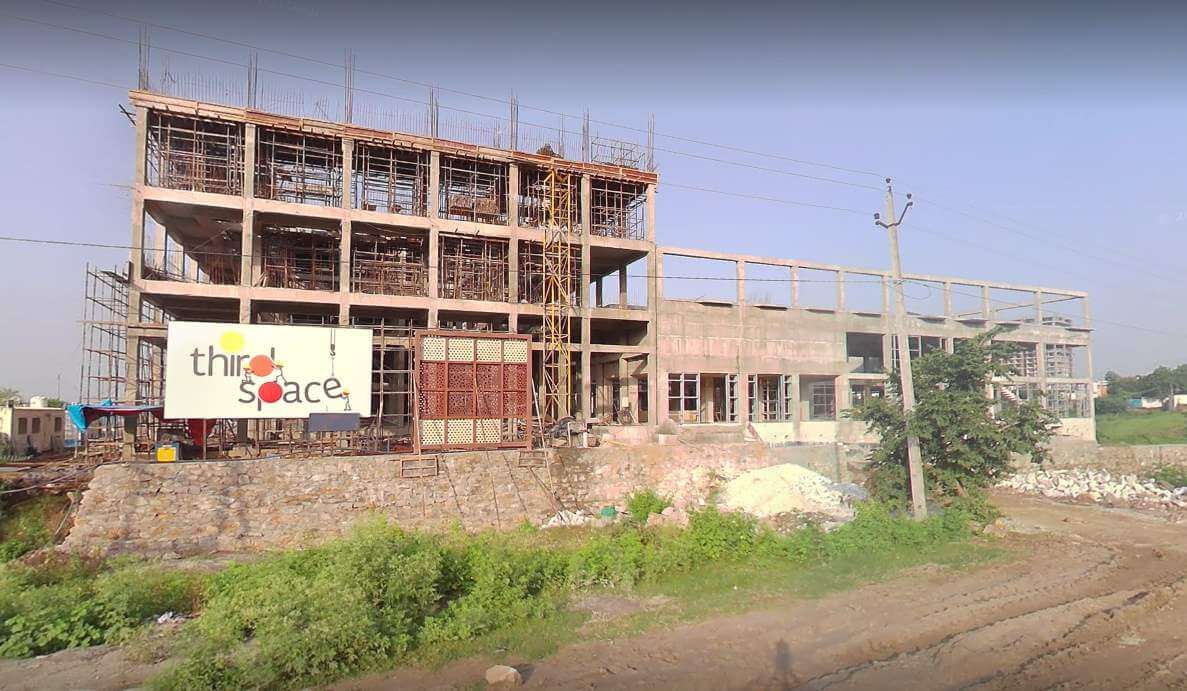
To be fair to Birmingham, were we live - we are very fortunate to have Europe’s largest public library in the Library of Birmingham. This is absolutely our Third Space and one of the reasons we continute to live in the city centre.
Joining the Team
Through my shared connection with Kate Kneale at Houghton Kneale Design (HKD), an opportunity for involvement arose. Kate and I are long-time collaborators, having organized game-making events together and exhibited our games alongside each other.
Kate informed me that HKD was designing the Frontiers Gallery for Third Space, and she was serving as a Critical Friend to the project. She suggested I contribute high-level game design thinking for the interactives going into the Science Museum space.
Frontiers: Science Museum
The Frontiers space is divided into four areas, each containing eight to ten interactives. At the time, some of these interactives were merely broad concepts, while others had more developed designs. My role was to help expand brief descriptions into detailed design documents, ensuring the experiences were fun, engaging, and educational.
I worked remotely from Birmingham and also collaborated in person at the HKD studios in Margate. During each session, I presented rough ideas for interactives, which we refined through playtesting and iteration before presenting them to the Dharohar team in India.
This was a highly interactive and iterative process. Some designs evolved into game prototypes in Unity, while others were paper prototypes or even PowerPoint-based prototypes - a trade secret tool for quick and simple interactive experiences. These prototypes with design documents were then sent to India for further development. They had access to software developers locally - so some exhibits were built by Secure Meters employees.
The Challenge of Museum Games
Designing museum games is an exciting challenge - it has some unique challenges when compares with mobile, web-based, or console games. The audience is varied, passing by quickly, with short attention spans and multiple distractions nearby. There’s little time to train players, and the game must convey an educational message while remaining fun.
Deeper Involvement: CRISPR CAS 9
Two projects involved deep game design and implementation: the CRISPR interactive and the Climate Change game (aka The Balancing Game). Here’s a deeper dive into the CRISPR interactive.
Initially, the CRISPR exhibit was mainly a video of Jennifer Doudna’s TED talk explaining gene editing. While an excellent video, we felt a more interactive experience was needed.
So, CRISPR is one of the biggest scientific advances in the last 20 years. Emmanuelle Charpentier and Jennifer Doudna won the Nobel Prize in Chemistry in 2020. It stands for… Clustered Regularly Interspaced Short Palindromic Repeats. But I guess you already knew that ;) It’s essentially a pair of DNA scissors, that allow scientists to make very precise cuts and even replace that cut DNA with a new sequence.
As a game designer, I like to do two things. Firstly, learn everything I can about a subject, and secondly, look at what games have already been made relating to the subject.
I started by looking at existing games around the subject of the CRISPR CAS 9 protein. There are a number out there – from simple mobile games to very in-depth explanations that feel like a degree or masters level knowledge is required to kind of solve these games. Given, we were short of time - I was hoping to find inspiration in these games but none of them really got the message across. The simpler games were based around shooting mechanics of the CAS 9 process which for me didn’t really communicate the incredible genius behind the science.
This meant going back to basics and looking at the CRISPR CAS9 process in detail to find out aspects that were fun and educational. It’s always worth knowing that we can find fun in even the most boring activities.
For example, right now if you went into the App store you probably find hundreds of games around working in a fast-food restaurant. Players will happily engage with these processes for hours a day – however few of these players probably aspire to work in fast food establishments! Yet a game designer has figured out which part of that experience is fun for our brains and has streamlined the process to keep it engaging and addictive. Museum Games have the extra challenge to get an educational message in there too.
Understanding CRISPR
So, I did a lot of research into the CRISPR process. I watched lots of videos and TED talks, listened to Podcasts, read books and papers. By the end of it I thought I had a good understanding of the process. I then watched scientists carry out the process in practice, and it all seemed very alien to me! It was clear that my lack of background in chemistry and biology limited my understanding. And all the research I’d absorbed was about dumbing it down into a level I could understand. Ultimately, they had all abstracted away lower-level details to make it understandable. It was clear that both myself and museum visitors would benefit from this abstraction. Here’s the super simple overview if you’ve not encountered this before.
Imagine your body is like a big instruction manual that tells all your cells how to work. Sometimes, there are mistakes or typos in this manual that can cause problems. CRISPR-Cas9 is like a super cool tool that scientists use to fix these mistakes in the instructions.
Here’s how it works:
- Find the Mistake: Scientists design a small piece of genetic material called RNA that matches the part of the instruction manual where there’s a mistake. This RNA is like a guide that helps the Cas9 protein find the exact spot in the DNA that needs fixing.
- Cut & Repair: Once the Cas9 protein finds the right spot, it acts like scissors and cuts the DNA at that location. When the cell tries to repair the cut, it can introduce corrections to fix the mistake.
- Fix the Repair Manual: Scientists can also add a new piece of genetic material that they want to insert into the DNA. When the cell repairs the cut, it incorporates this new material, effectively replacing or adding something new to the instructions.
Game Concept
The concept was that the Players take on the role of CAS9 protein (these are the DNA Scissors):
- Unravel the double helix
- Align a PAM marker (the only place you can cut DNA)
- Decide if there’s a match to the sequence we’re looking for
- If yes, cut the DNA
- Watch the repair animation
- See if the gene was correctly knocked out
At the core of this process is essentially a matching style game.
Collaboration and Physical Design
It was also clear that CRISPR is the result of collaboration in the science community over decades. While Doudna and Emmanuelle Charpentier won the Nobel prize for their work on high-precision genome editing – it builds on the work of a much larger community and many more will build from this.
We wanted to get across this message of collaboration in our game. The way to do this is to ensure both players bring something to the game – that it is not possible for them to succeed without collaboration. The solution to this is to share the controls and knowledge and information between the two players. This creates a forced collaboration between the players.
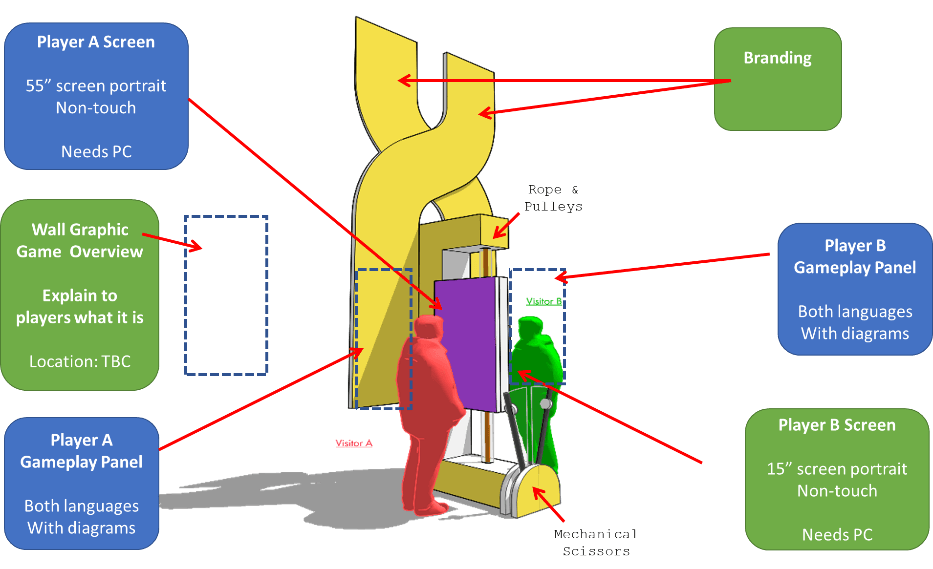
Physical Layout – Rope and Scissors
We need to design the physical appearance of the interactive at the same time as the game design. Then later we need to address the software development and the electronic development that will make it function. One of the most enjoyable parts of museum game development is that we can build very customised controllers. This helps to ensure players can quickly understand the game as the controllers convey the interactions.
We decided on a Rope and Scissor approach. The rope is designed to look like the double helix strands. Pulling on the rope moves the DNA through the CAS9 protein – unravelling it so we can see the PAM marker.
Only, once the players are sure of a match do they operate the scissors together and begin cutting the DNA.
Teamwork
As stated above, the controls and knowledge are split between the two players. Only, one player can see the DNA unravelling on the screen whereas the second player only has access to the rope DNA. This means player 1 has to instruct player 2 to pull on the rope in order to align the PAM marker.
Then the second phase of collaboration is deciding whether this is the correct gene to ‘knock-out’. Only one player has access to the list of genes and therefore needs to describe this to their partner. There is an additional challenge that the DNA sequence is inverted - making the game more challenging and requiring more concentration and understanding.
Ultimately, this creates a very fun, collaborative experience with lots of discussion between the two players. It provides an energetic atmosphere but there’s some actually real learning going on and there’s some good takeaways for the players. And, this is supplemented by the other interactives in the space that help to kind of reinforce this learning experience.
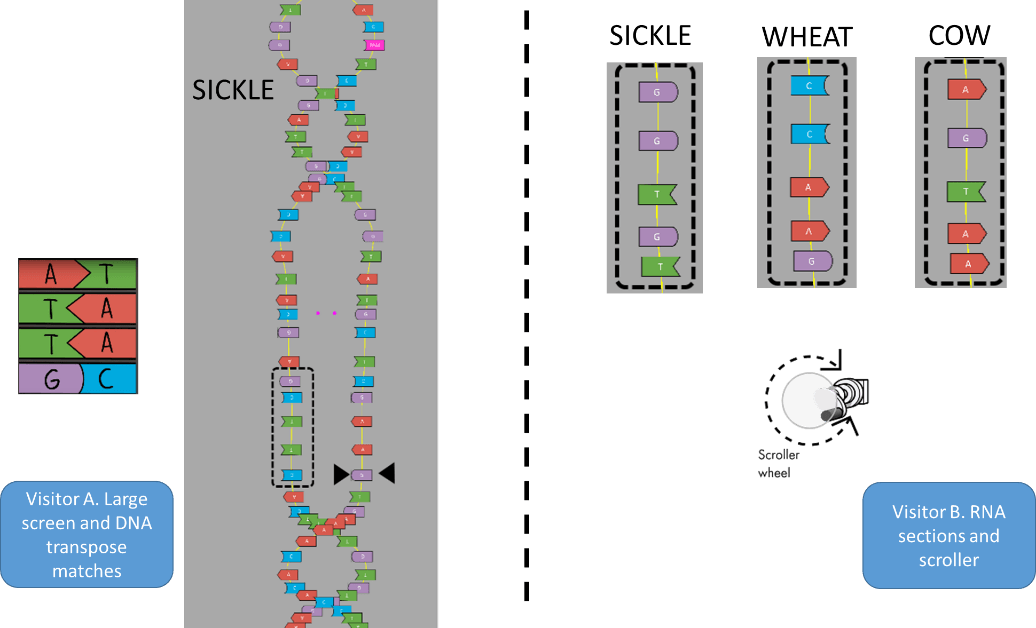
Playtesting
The most important part of any game development is the playtesting phases. And also, developing a game knowing that you’re going to do extensive playtesting and will need to adapt the game according to the process. So, the software development should take into account that we’ll need to make changes. It’s still better (cheaper!) to make changes earlier in the process so testing even with early prototypes is very useful.
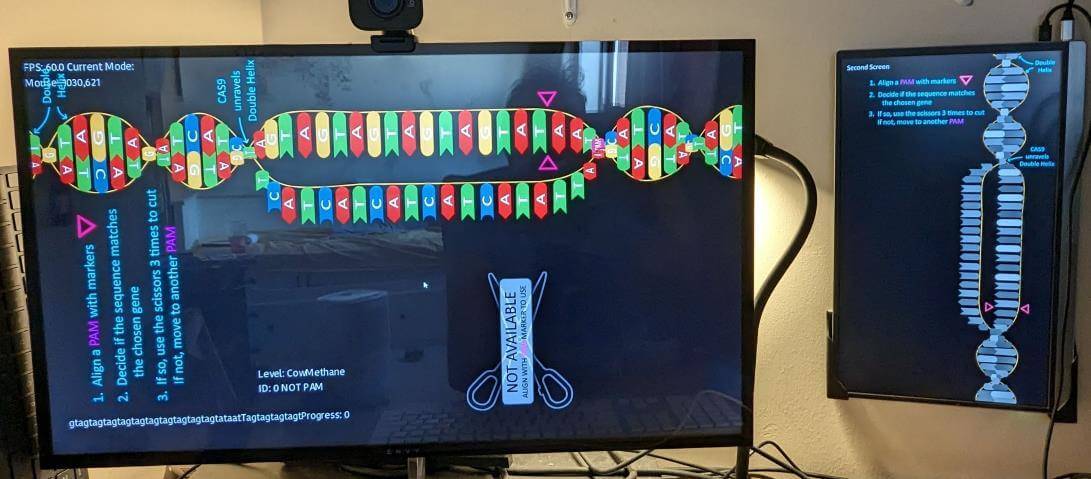
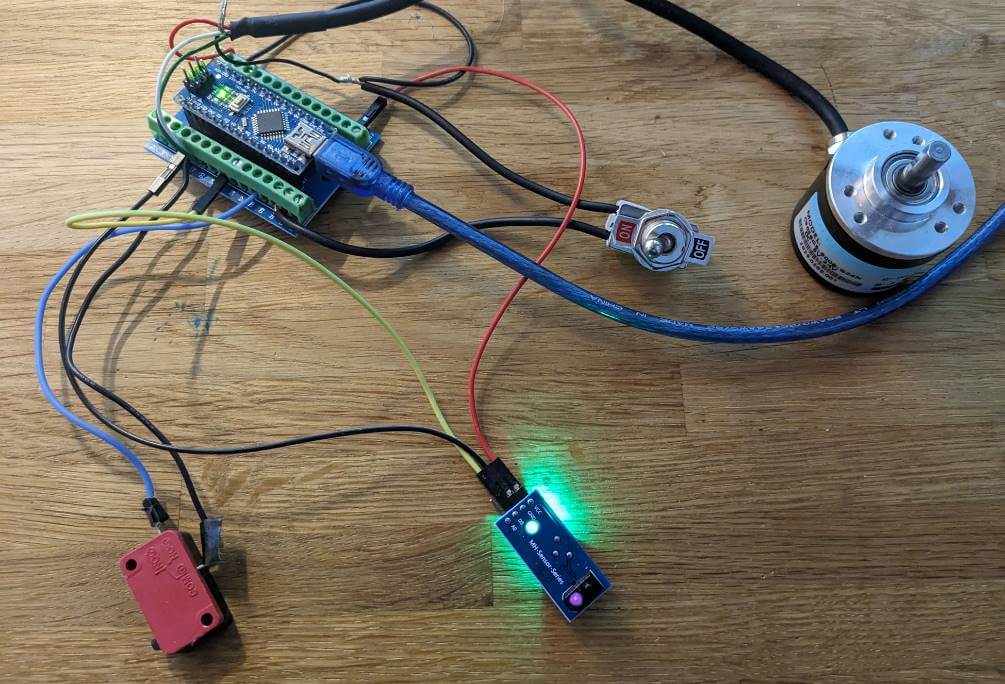
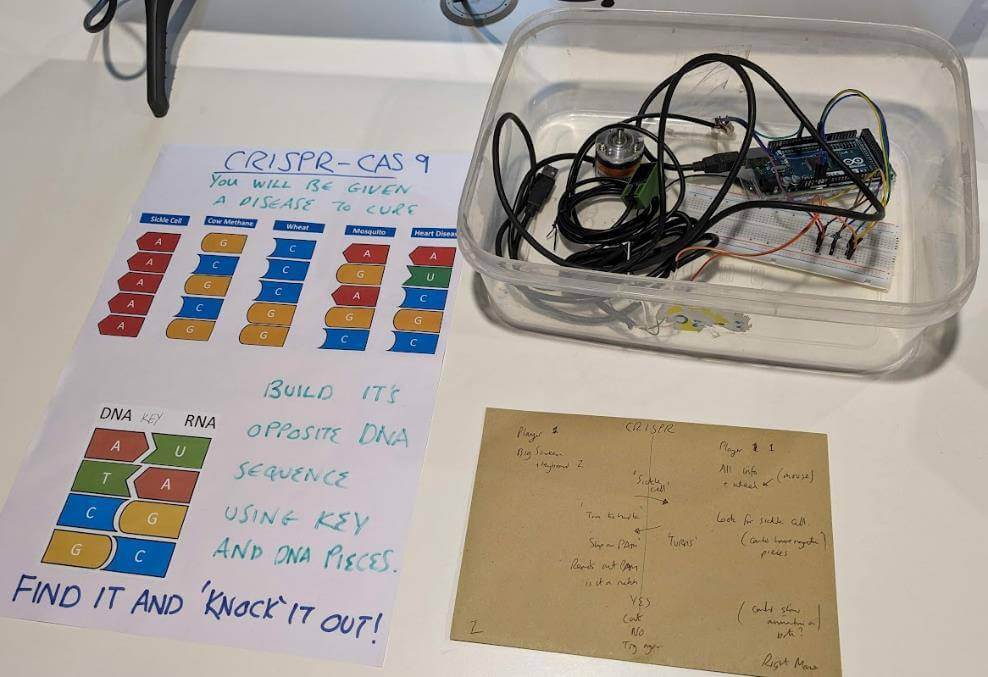
Note: Usually, I learn more watching players than asking for their direct feedback - so the language barrier was less of an issue.
Development Process
Working remotely creates certain challenges – particularly when the distance is almost 7,000km. The process benefited a great deal from openness and trust. But struggled due to tight deadlines, a variety of teams working on it and language barriers.
A visit to India in September was a fantastic experience – both to see the progress on the Third Space and to work directly with the team. Despite being fairly well-travelled I had never been lucky enough to visit India before. It was a very productive and enjoyable experience. It was clear that I could have spent double the time there. This visit allowed us to conduct in-person playtest sessions, which were essential for refining the final game.
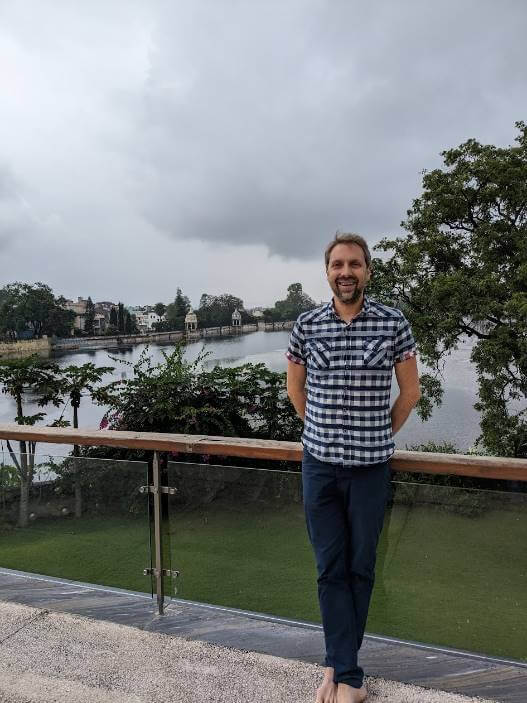
Finished Product
By the end of my visit to Udaipur, all of the component parts were working - however, it needed the development of the physical exhibit to match the original 3D designs drawn up by HKD. This happened at a later date and is now installed in the Frontiers Science Gallery.
Note: originally, it was envisigaed that the player would pull on a physical rope (that looked like DNA). The rope would pass between the screens - so that it would give the apperance that the DNA rope is unravelled on the screen. Unfortunately, the phyiscal build was deemed too complex and this was replaced with the rotating turning wheel.
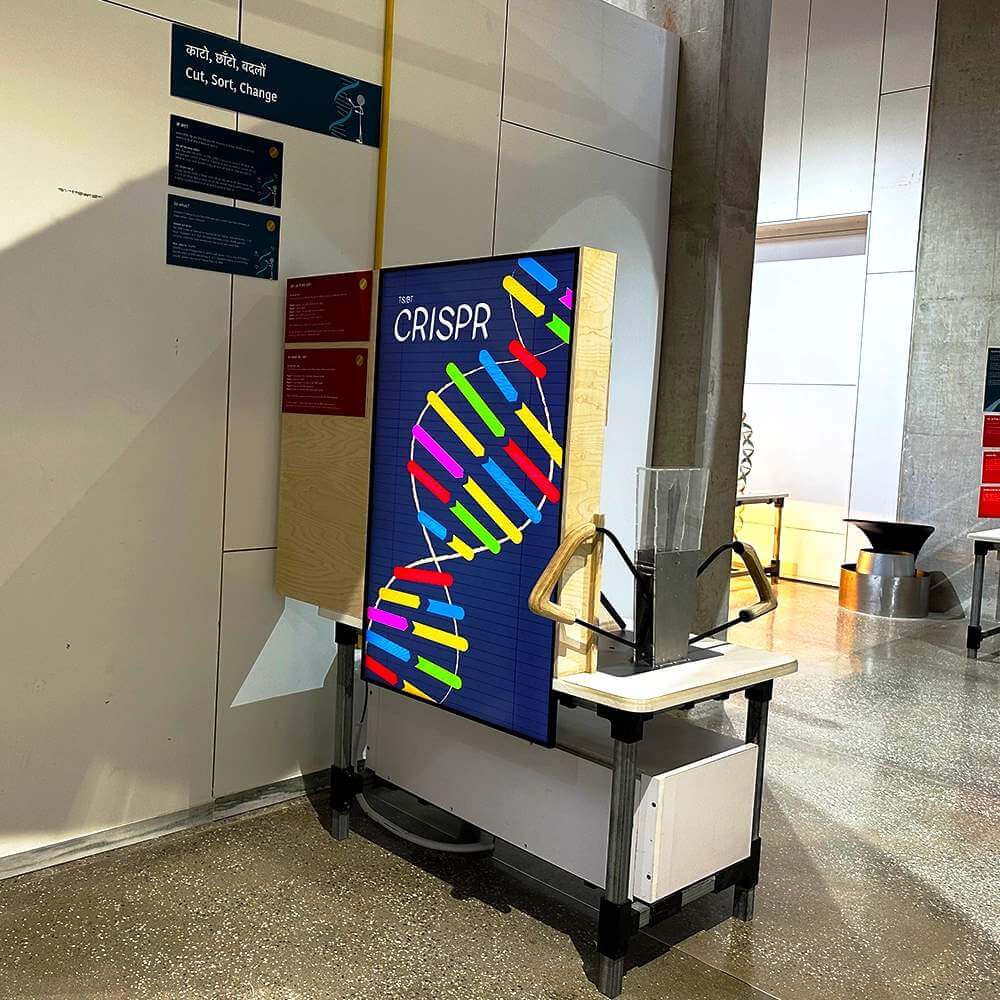
Overall Experience
I consider myself fortunate to have played a small part in an incredible project. They’ve assembled a fantastic team and focused on good systems and processes. Dharohar have created a wonderful physical space for the people of Udaipur.
Hopefully, some of my game design thinking and principles transferred to the team in Udaipur and they continue to iterate on the interactives we’ve built together. I’m looking forward to visiting again in the future and seeing just how far they’ve taken these ideas.
Bonus post-credit content: PLUGS
What is the best plug in the world, and why is it the UK (BS 1363) plug? 🔌

